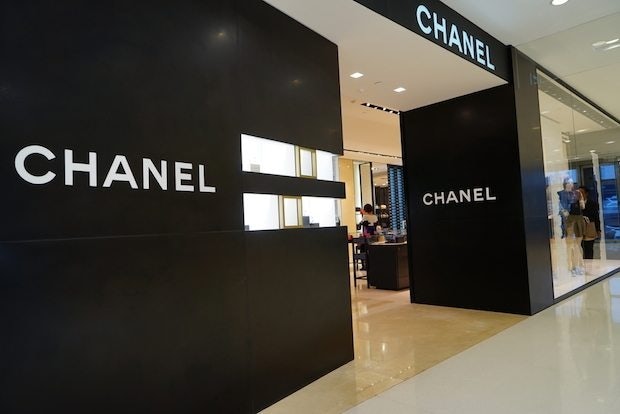
A Chanel store in Hangzhou. (Shutterstock)
Chanel’s recent decision to increase prices in Europe by 20 percent and lower them in China raised eyebrows throughout the global luxury industry. Ostensibly this move was designed to “align” prices in anticipation of an international e-commerce push. Coming in the wake of the euro’s sharp devaluation since mid-2014, which accelerated significantly in the month of March, Chanel’s move drove home the fact that pricing is key in every industry. Winning pricing strategies involve extracting the maximum value a customer is willing to pay (a basic tenet of economics).
But is this latest move a strategic one, which will generate sales and build loyalty, or is it an opportunistic, tactical response? And should other brands follow Chanel’s lead?
One might first look at the current economic backdrop and its impact on the luxury industry. The industry had enjoyed several years of booming sales worldwide, largely driven by the traveling Chinese consumer. Together with China, the fast-growing economies of Brazil and Russia bucked the trend of lackluster sales in a moribund Europe and a post-2008 United States.
However, 2014 brought significant challenges to an already complex market. The first seismic shift was China’s ferocious crackdown on corruption, which severely impacted hard luxury sales, particularly those of watches, spirits, and anything considered “bling.” At the same time, Chinese consumers evolved. They began to travel less in groups, visit new destinations, and develop different brand interests.
The other darlings of the luxury industry, Russia and Brazil, also stumbled in 2014, crimping the performance of several firms that were overly dependent on either consumer. The sharp devaluation of the Russian ruble saw double-digit drops in tourism to key cities and caused local consumption to plummet. Brazil’s economy also showed a significant slowdown, followed itself by a significant devaluation against the U.S. dollar. Brazil’s outbound tourism continues to grow, albeit at a slower pace.
From a policy standpoint, China’s growth is becoming more subdued and the requirement for the government to ensure growth while avoiding bubbles is strong. Although a strong U.S. dollar and weaker euro remain probable scenarios in the medium term, China’s current position is far from predictable—just as its policies are opaque. One unknown is whether economic uncertainty (or Beijing itself) will drive a depreciation of the renminbi. In much the same way it was fully unexpected in Russia, a devaluation of the RMB cannot be entirely discounted. Were this to happen (in a way that would most likely be far less dramatic than in Russia), it would throw a very large wrench into the luxury industry’s overall performance.
For the moment, China’s global consumers remain one of two bright spots for the luxury industry, with the other being the United States. While brands, from time to time, discuss the impact of tourism on their international business, what is discussed less openly is that most China operations are not profitable. Although 100 percent of China investment is made in-market, over 75 percent of Chinese consumers buy abroad. And while domestic consumption has contracted, purchases overseas continue to grow.
Currently, Chinese consumers are driven by a number of factors—not just price—when making purchasing decisions. Service, trust, experience, and perceived novelty also encourage Chinese consumers to purchase abroad. Even with a 20 percent price hike in Europe, these factors will still make it more attractive for Chinese consumers to purchase in the Eurozone. But—at the same time—the price increase will dissuade a Russian rebound.
The bigger question remains: will a reduction in price in China release the genie in the bottle, stimulating local demand and delivering better performance from Chinese business units? It’s unlikely that this alone will change the entrenched behavior of the majority of Chinese luxury consumers. One possibility is that it could backfire, eroding the perceived value of the brand, and negatively impact the performance of other important markets.
The “not-so-secret” secret of the luxury industry is that many brands are simply overextended in the domestic Chinese market. Having expanded rapidly in the wake of the 2008 financial crisis—where China was seen as a counterweight to struggling traditional markets—many firms are laden with expensive real estate and unprofitable locations. As the industry focus has moved from one of sales growth to one of profitability, in 2015 we will most likely see slimmer infrastructure in China with brands “rationalizing” their networks.
In this context, big price cuts seem desperate and reactive. By the same token, while price increases in Europe will bring more profitability to European locations via Chinese visitors, basing strategy on one of the most volatile stores of money—currency—is a risky approach indeed.
At the same time, an international development strategy cannot be based on one single nation alone; it requires a more nuanced and comprehensive approach in order to protect the integrity of a brand’s entire international customer portfolio. This is even more crucial amid against an uncertain economic backdrop.
Luxury executives would be better advised to take a broader, more long-term view of how to serve their key global consumers (whether Chinese or other) with a greater emphasis on cross-border e-commerce and m-commerce, customer relationship management (CRM) and technology. Additionally, executives should consider international brand-building activities that more accurately appeal to the current behavior of the global luxury consumer, and rely less on the traditional “modus operandi” of the luxury industry.
This challenge in particular remains largely unaddressed in the boardrooms of Paris, Milan, and London. Adjusting pricing is not a proactive strategy but a reactive tactic—and an uncertain one at that.
Philip Guarino is the Europe director at China Luxury Advisors.